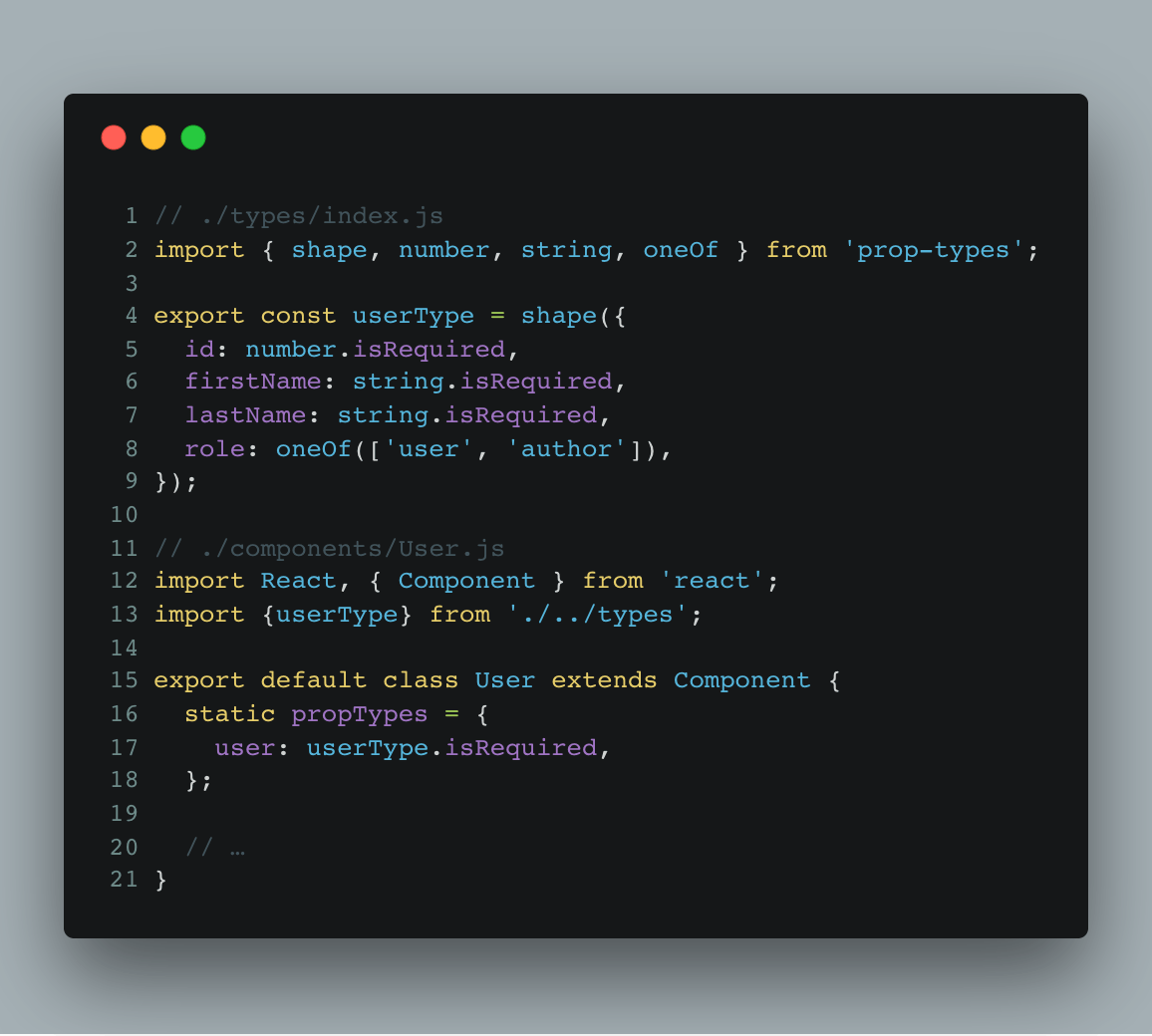
Cory House:
In real apps with large objects, using PropTypes quickly leads to a lot of code. That’s a problem, because in React, you’ll often pass the same object to multiple components. Repeating these details in multiple component files breaks the DRY principle (don’t repeat yourself). Repeating yourself creates a maintenance problem. The solution? Centralize your PropTypes.
Using the shape function of the prop-types package it’s possible to define types yourself. You could have your own definitions an address or a user for example. These type definitions can then be used like other prop-types types.
Cory centralizes his (custom) PropTypes in types/index.js …
import { shape, number, string, oneOf } from 'prop-types';
export const addressType = shape({
id: number.isRequired,
street: string.isRequired,
street2: string,
city: string.isRequired,
state: string.isRequired,
postal: number.isRequired,
});
export const userType = shape({
id: number,
firstName: string.isRequired,
lastName: string.isRequired,
company: string,
role: oneOf(['user', 'author']),
address: addressType.isRequired,
});… and then imports them when needed:
import React, { Component } from 'react';
import {userType} from './../types';
export default class User extends Component {
static propTypes = {
user: userType.isRequired,
};
// …
}